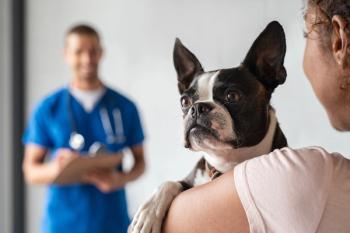
Study: Fat pets cost owners millions
Obesity isn't just harming the health of American pets-it's taking a toll on pet owners' wallets, too.
The preliminary data from a nationwide collaboration between Banfield Pet Hospital of Portland, Ore., and the Association for Pet Obesity Prevention shows that veterinarians classified 32 percent of cats as overweight and 22 percent as clinically obese, or greater than 30 percent of normal body weight. Veterinarians had similar findings for dogs. Thirty five percent of dogs were found to be overweight and 21 percent obese.
“The number of obese pets is growing,” says Dr. Ernie Ward, founder of the Association for Pet Obesity Prevention (APOP) and a Veterinary Economics Editorial Advisory Board member. “This is troubling because it means more pets will be affected by weight-related diseases, such as arthritis, diabetes, high blood pressure, and kidney disease, costing pet owners millions in avoidable medical costs.”
APOP began conducting veterinary surveys in 2007 and the group has seen a steady increase in the percentage of pets classified as obese. For example, in 2007, about 19 percent of cats were found to be obese by their veterinarian. In 2010, that number increased to almost 22 percent.For dogs, obesity rates have increased from just over 10 percent in 2007 to 20 percent in 2010.
The bottom line, according Dr. Ward: Pets are battling excess weight just like their owners. He says the group’s goal is to help pet owners care for both themselves and their pets through better diet, exercise, and lifestyle strategies. To learn more about the fourth annual Association for Pet Obesity Prevention National Pet Obesity Awareness Study, visit the
Newsletter
From exam room tips to practice management insights, get trusted veterinary news delivered straight to your inbox—subscribe to dvm360.





